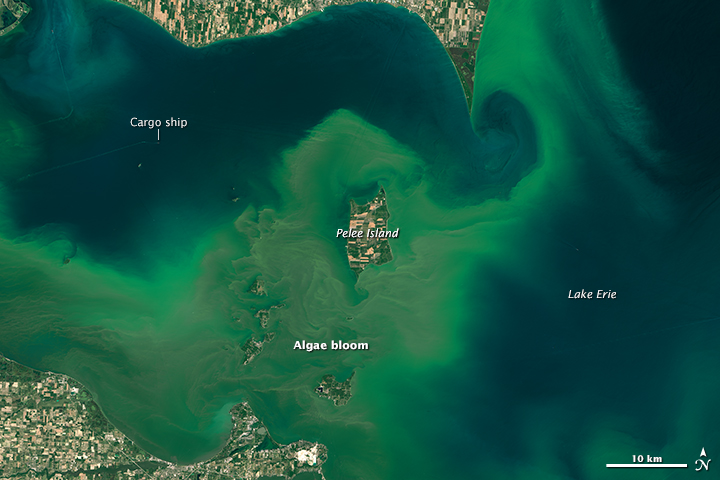(As submitted by Mike Ferner, Coordinator Advocates for a Clean Lake Erie)
Responding to your article, “Farmer asks County not to declare Lake Erie ‘impaired,'” in the BG Independent News, it is important to say that “simple farmers,” as Mr. Drewes defines himself, and people who want to clean up Lake Erie are not enemies and in fact have much in common.
I grew up and worked on farms in Richfield Twp., in western Lucas County, spending many summers hoeing corn, soy beans and sugar beets and baling hay. In those days factory farming was unheard of and I know from my own experience that traditional farmers try to be good stewards of the land and water.
Up until 20-some years ago, many more family farms supported the rural economy and grocery stores had plenty of milk, eggs, hamburger and pork chops without CAFOs (Concentrated Animal Feeding Operations) even being imagined. Today, the Ohio Farmers Union, representing a dwindling number of “simple farmers,” is very opposed to the radically unsustainable form of agriculture represented by CAFOs. This industrial form of food production is the exception to a long tradition of farming methods and history shows it’s not necessary.
“Only” 146 CAFOs in the Western Lake Erie Watershed generate an amount of animal waste equal to the sewage output of Chicago and Los Angeles combined — some 700,000,000 gallons annually. That does not include an unknown number of “one-under” operations that stay just below the number of animals that requires registration with the EPA.
The Ohio Dept. of Agriculture estimates 80-85% of excess nutrients going into Lake Erie are from agriculture and there can be little doubt that most of it comes from CAFOs.
So we are faced with a big problem that will only get worse if we ignore it.
Advocates for a Clean Lake Erie supports the same kind of cleanup for Lake Erie that is ongoing with the Chesapeake Bay. The U.S. EPA is overseeing an inventory of all pollution sources, setting the Total Maximum Daily Load (TMDL) from all sources that the bay can absorb and remain relatively healthy and a mandatory action plan with deadlines and report cards. This process can be monitored at Chesapeake Progress and an important study on the economic benefits of cleaning up the Bay can be found here.
The Chesapeake Bay history is important for us to heed, if we want to protect Lake Erie with all its environmental and economic benefits from ruin and do so economically.
From 1983 to 2000, a series of failed, voluntary agreements to reverse the poisoning of Chesapeake Bay wasted valuable time and money. Luckily, the final agreement contained a “poison pill” that said if results weren’t achieved, mandatory TMDLs would be set. That happened in 2010. In 2011, the American Farm Bureau, National Pork Producers Council and other Big Ag interest groups filed suit in Federal Court, saying the Clean Water Act didn’t authorize the EPA to oversee agricultural TMDLs. It took five years to resolve that challenge in favor of the Bay and the EPA. But the Farm Bureau continued its propaganda war against the cleanup, even telling PA farmers the EPA was planning on confiscating hundreds of thousands of acres of farmland. That lie, too was laid to rest, but only after scaring the daylights out of a lot of farmers.
The CAFO industry in OH, MI and IN, the states in the Western Lake Erie Watershed, has similar political clout. For example, Karl Gebhardt, Deputy Director of the Ohio EPA and head of Lake Erie policy for the agency, formerly lobbied state government for the Ohio Farm Bureau for 19 years and for at least two years lobbied for Vreba-Hoff, Inc., the original dairy CAFO operators in Ohio and Michigan that developed a terrible record of violations and ultimately went bankrupt.
So this is the choice we face: bowing to the pressure of corporate agriculture and continuing to poison Lake Erie and our drinking water, or have citizens who want a healthy Lake Erie band together with “simple farmers” as Mr. Drewes describes himself.
Lake Erie was considered on its death bed in the 1960s. The problem was Phosphorus in detergents and ineffective sewage treatment. But people demanded change, government responded and Lake Erie bounced back. The problem now is manure. We did it before and we will do it again.

